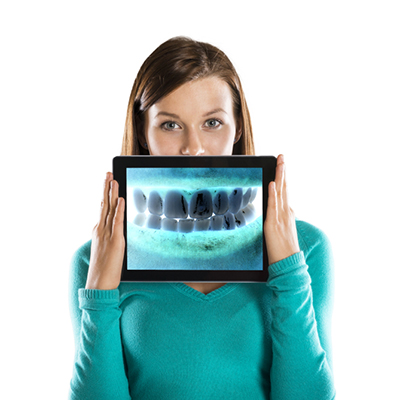
The publication reports on the finding of extensive research which practices are well advised to read and incorporate the findings of this research into their Radiation Policy and Procedures. Full copy of the report is available here.
The publication aims to:
- Propose safety standards for the design and construction of hand-held dental X-ray equipment;
- Provide guidance for dentists regarding the practical application of the Ionising Radiations Regulations 1999 (IRR99) to use of the equipment for intra-oral radiography.
This publication supplements and updates the existing Guidance Notes for Dental Practitioners on the Safe Use of X-ray Equipment (the Dental GNs), published by the National Radiological Protection Board (NRPB, 2001)*, and the Medical and Dental Guidance Notes (MDGNs), published by the Institute of Physics and Engineering in Medicine (IPEM, 2002). The content of this article is extracted from the published document.
Other associated findings impact on practice Policies and Procedures for:
- Management of Health and Safety at Work Regulations 1999: Requires employers to consider workplace hazards other than those from ionising radiation. Employers will need to consider any non-radiological hazards to employees, patients and other people associated with the use of hand-held X-ray equipment for dental radiography (such as manual handling) and undertake a suitable and sufficient risk assessment. However, a detailed discussion of these issues is outside the scope of this publication.
- Pregnant employees: The effective dose received by an employee working with a model of hand-held equipment that complies with the recommended design standards in Section 3, and used in accordance with this guidance, is expected to be significantly lower than 1 mSv a year. This should be identified as part of the risk assessment process, in which case it can be concluded that the dose to the fetus should also be lower than this level and therefore no special protection measures are necessary. However, the legal person may consider a change of duties.
- Local rules: In consultation with the RPA, local rules specifically for the use of hand-held X-ray equipment should be produced. These local rules should describe, for the specific model of X-ray set, the clinical situations for which it would be appropriate to use it in a hand-held fashion, and when (if relevant) it should be used mounted on a tripod or a conventional fixed dental X-ray set be used instead. The local rules should also include the following items, those highlighted in bold type will require special consideration for hand-held dental X-ray equipment:
- Description of the extent of the controlled area, and the exact conditions under which it exists.
- Means of restricting access to the controlled area.
- Name(s) of the radiation protection supervisor(s) for the dental team (RPSs).
- Means of preventing operation of the equipment by unauthorised people.
- ‘Key working instructions’ setting out the safety precautions that the operator must follow to restrict exposures to themselves and other people (these will constitute written arrangements as the operator, who will not usually be a classified person, stands in the controlled area).
- Arrangements for ensuring the security of the equipment when not in use, when in transit and when used at other premises (if relevant).
- Dose investigation level.
- Use of personal dosimetry.
- Circumstances (if any) under which PPE should be used, and what this should comprise.
- Contingency plans to be followed in the event of accidents, including notifications to be made in the event of high doses to people, and loss or theft of the unit.
- Prior risk assessment: Before using hand-held dental X-ray equipment for the first time, it is important that a specific risk assessment for the work is produced and reviewed thoroughly against paragraphs 44 and 45 of the Approved Code of Practice to IRR99 (ACoP) (HSE, 2000), in consultation with a suitable RPA, and the outcome documented. The aspects that will require careful consideration (with the RPA’s assistance) are listed below:
- Likely annual effective dose and annual equivalent dose to the operator and other people arising from use of the model concerned (see Section 4.5.1).
- Guidance on the Safe Use of Hand-Held Dental X-ray Equipment.
- Likely effective and equivalent doses to the operator and any other affected people arising from reasonably foreseeable accidents involving the model concerned.
- Based on the above, a decision regarding whether or not the model selected meets the standard proposed in Section 3 of this guidance and, consequently, under what circumstances it is appropriate for use as a hand-held device.
- Suitability of the device’s safety and warning features.
- Suitability of the intended location for use of a hand-held X-ray set, or if it is to be used at remote locations, a description of how the suitability of each location will be assessed on a case-by-case basis.
- Arrangements for preventing accidental damage of the device during use, and for ensuring its security when not in use and when being transported (if applicable).
- Working methods needed to restrict the dose to the operator, i.e. maintaining the X-ray beam in the horizontal plane, avoiding placing hands in the X-ray beam, holding the unit at forearm’s length from the body, and the practicality of applying these in the working environment in question.
- Whether there are likely to be special circumstances where the working methods given above will not be practicable; for instance, radiography on patients with restricted head movement, or under sedation or general anaesthesia, or in a care home setting.
- Based on consideration of items g and h above, if use of a lead apron, lead gauntlets or any other personal protective equipment will be required.
- Based on consideration of items c, g and h above, whether a means of remotely initiating exposures is required (see Section 3.3, paragraph e) Decisions regarding the need (or otherwise) to designate operators as classified persons, and the need (or otherwise) for personal dosimetry.
- Risk Assessments: To identify any further actions necessary to restrict exposure, including the working methods that will be necessary to ensure the radiation safety of all people and compliance with IRR99 during the work. These working methods should be included in the local rules.
- Designation of areas: Once a hand-held dental X-ray unit is switched on, pressing an ‘enable’ key followed by pressing the exposure button are often the only actions required to initiate X-rays. In some cases, pressing the exposure button alone is sufficient to trigger an exposure. Therefore, operators are required to follow special procedures to restrict their own exposure and those of anyone else who might be in the vicinity. It follows that, as required by IRR99 regulation 16, a controlled area should always be designated and should be considered to exist whenever the unit’s power is switched on. Within the dental practice setting there are two options for designating the controlled area, as follows.
Option A
The whole room is designated as a controlled area during radiography where this is reasonably practicable. This is the preferred approach for hand-held X-ray equipment as the walls of the room physically demarcate the controlled area, access to which can then be more easily restricted.
The following points should be noted:
- Access to the controlled area should be restricted by either locking doors or positioning another member of staff outside the door.
- Use of room warning lights (i.e. outside each of the surgery entrances) is only practicable for hand-held equipment where the operator can switch the warning lights on and off between periods of radiography.
Option B
Where it is impracticable to follow option A, a controlled area could be designated that extends to not less than 1.5 m from the X-ray tube head and patient, and includes the primary beam until suitably attenuated. The operator should restrict access to the area by continuous supervision, be able to see the boundaries of the controlled area and be able to terminate the exposure if someone tries to enter.
Whether option A or B is chosen, no person other than the operator and the patient should remain in the controlled area during an exposure, unless this is necessary to assist or support the patient. In either case the operator’s work in the controlled area should be under suitable written arrangements (as part of the local rules) similar to those used for traditional dental X-ray equipment, unless the operator is a classified person.
- Special cases: Where a hand-held X-ray set will be used at other premises, such as at a care home or patient’s private residence, some flexibility of approach will be necessary to take account of the circumstances in each case, while still complying with the requirements of IRR99 with regard to the designation and demarcation of a controlled area, and restriction of access. It should not normally be necessary to designate any other areas as either controlled or supervised, outside a controlled area that has been designated in accordance with the guidance above.
- Security of hand-held dental X-ray equipment: At any time when it is not being used, or under the operator’s direct supervision, hand-held dental X-ray equipment should be placed in a secure, locked area to prevent its reasonably foreseeable loss, theft or unauthorised use. While the practice is closed the unit should be stored out of sight in a locked metal or theft-proof cabinet. The battery should also be removed from the main unit if possible and stored separately from it, particularly if the control panel lacks features protecting it against unauthorised operation, such as a PIN.
If the X-ray unit is to be used at other premises, such as a care home, the person transporting the unit will be responsible for ensuring its security in transit. The unit must be transported in a way that would not allow an unauthorised person to easily gain access to it, or operate it in the event that it, or any vehicle in which it is transported, is stolen (e.g. by transporting the unit in a locked metal case). It should only be kept in an unattended vehicle for short times if unavoidable and only if it is out of sight within the vehicle, and the vehicle locked.
This new guidance will be embedded into the QCS resources and so you are advised to download the updated documentation for your compliance resources.




